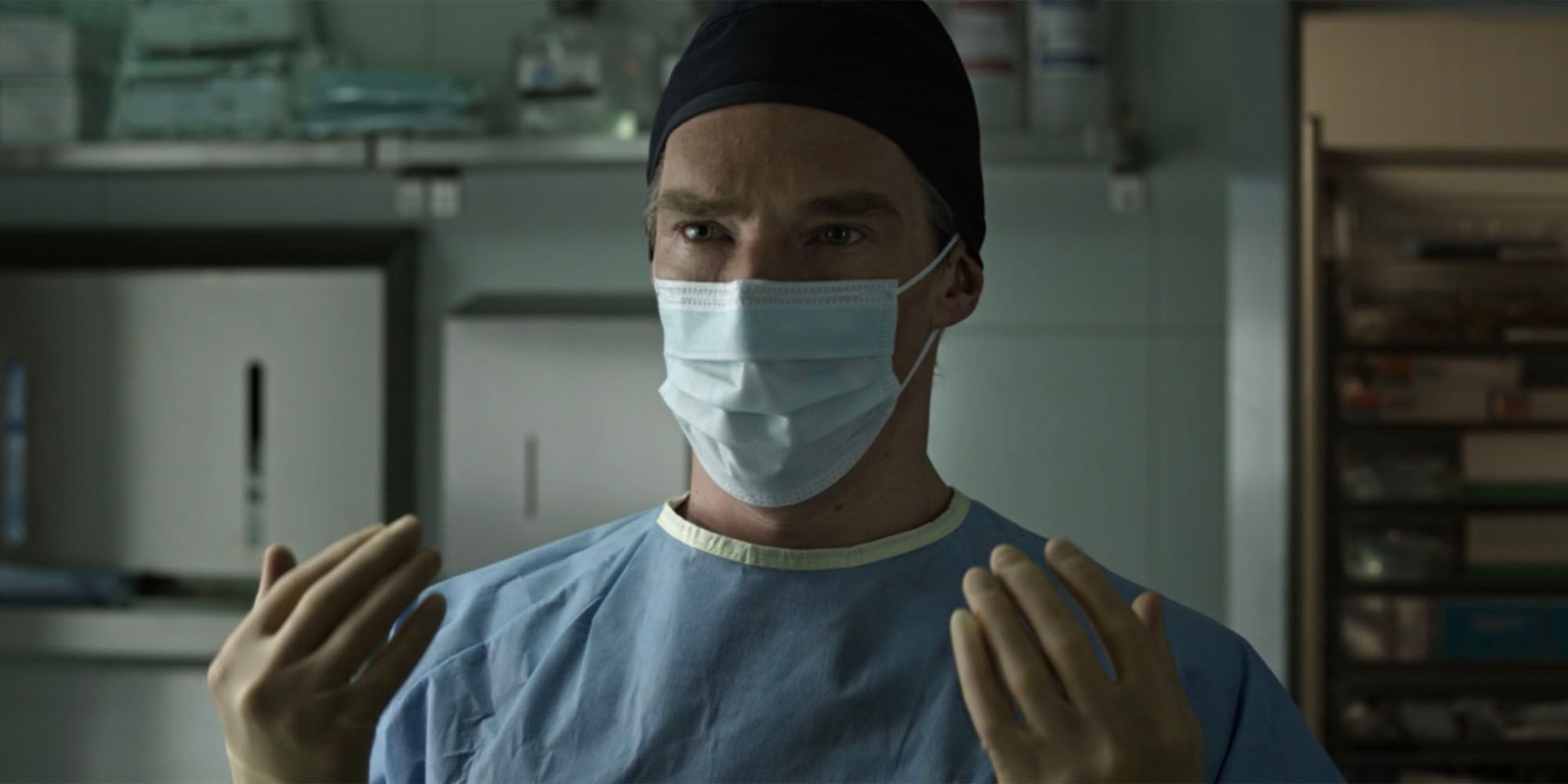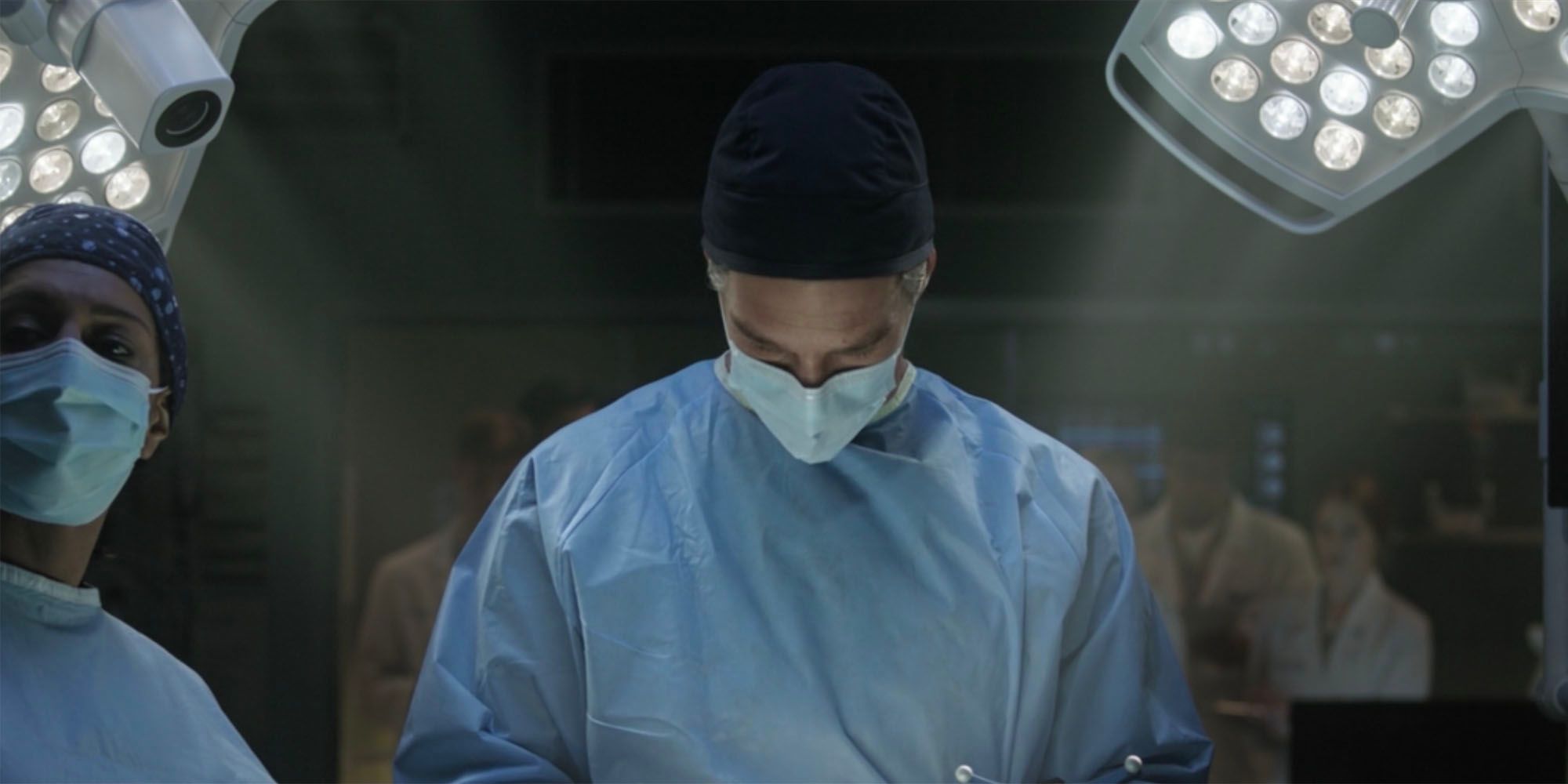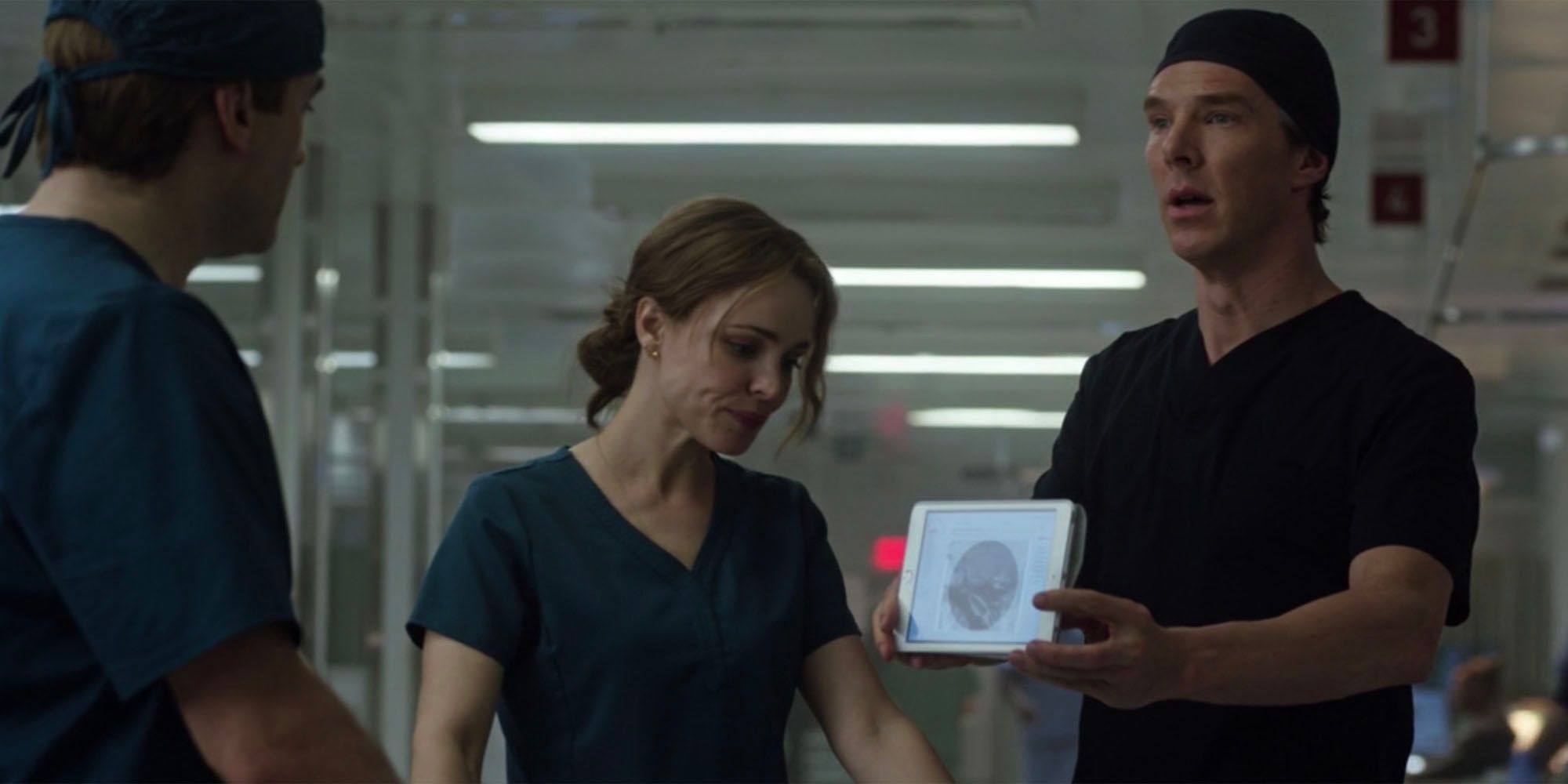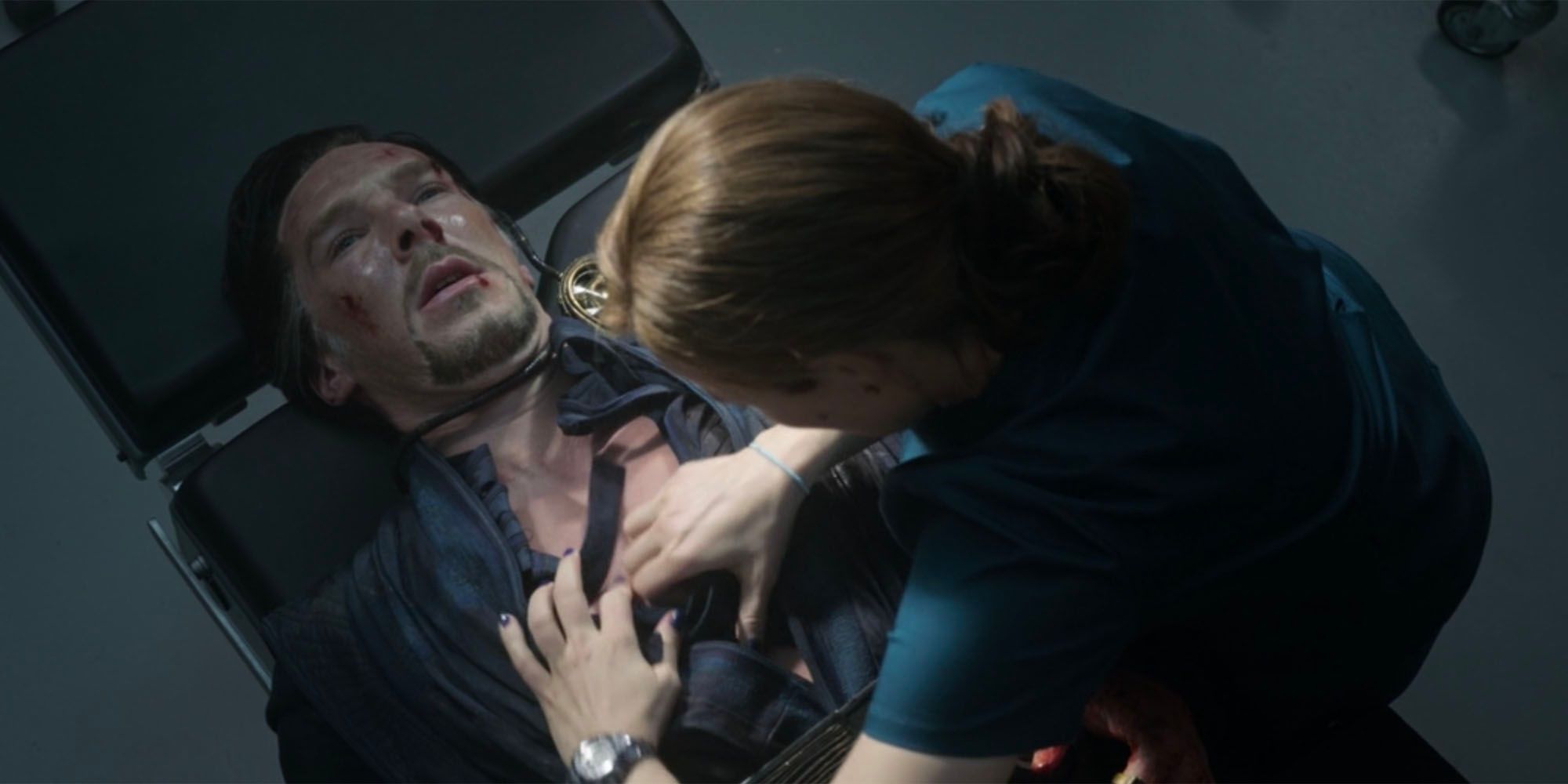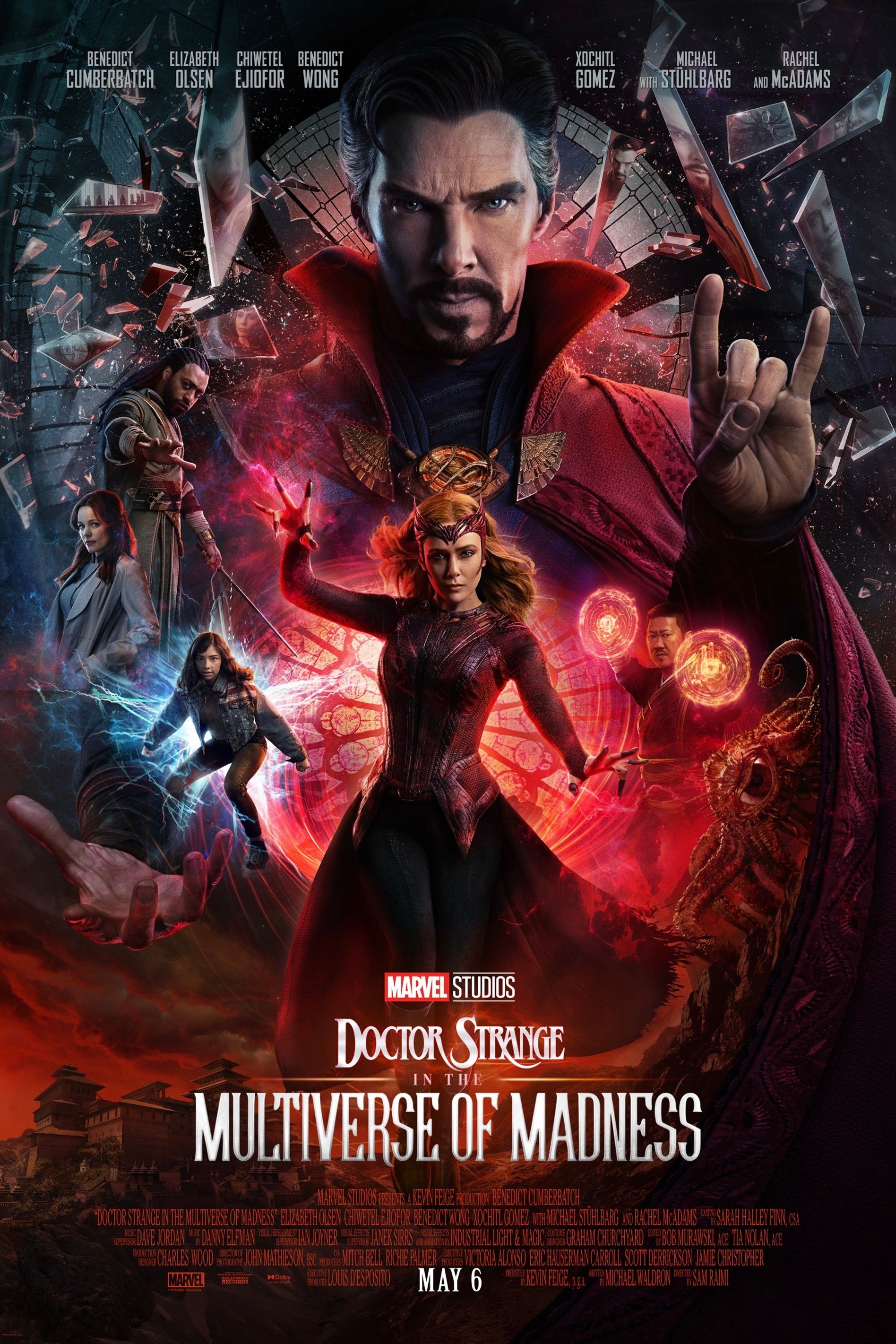Doctor Strange may have been a wealthy and acclaimed New York neurosurgeon, but the many medical errors in the film bring into question how good of a doctor he really was. Before becoming a Master of the Mystic Arts, Dr. Stephen Strange (Benedict Cumberbatch) was known as an arrogant, egotistical doctor who only cared about his career and reputation and was widely respected as being at the top of his field. However, when the bones and tendons in his hands are shattered and torn to pieces in a brutal car crash, the extensive nerve damage he suffers leaves him with a long-term tremor that even rehabilitation and physical therapy cannot heal. He is therefore no longer able to perform surgery and must give up his career as a practicing neurosurgeon.
His love interest and emergency surgeon Dr. Christine Palmer (Rachel McAdams) does her best to help him move on and accept his new circumstances, but as a man too proud and vain to accept an alternative career as a teacher, Doctor Strange becomes obsessed in his search for a way to restore his hands’ motor function to what they were before the accident. After much drifting and searching, he eventually learns about Jonathan Pangborn, a paraplegic who suddenly regained the complete use of his legs. This would eventually lead Doctor Strange to Kamar-Taj where he meets the Ancient One (Tilda Swinton) and learns the Mystic Arts, setting him down the path to joining the Avengers in protecting the Earth from Thanos.
Amidst all the spell-casting and main plotlines however, Doctor Strange also features its fair share of medical scenes, something which likely comes as no surprise given Strange’s backstory. However, a quick dissection of some of these scenes brings into question just how good of a doctor was Strange? And for that matter, was anyone in that hospital good at their job?
Dr. Strange Contaminates a Sterile Field
The first medical scene introduces Stephen Strange, presenting him performing delicate surgery with cool confidence, even tapping his foot along to the music playing in the operating room as he works. Problems arise within seconds however, as he washes his hands, putting on his protective equipment and ensuring everything is sanitized. Just as soon as he has washed his hands and put on his surgical gown, he uses his un-gloved hands to put on his face mask. This is an obvious mistake, as the mask should be put on first and hands washed and gloved after, so as to avoid cross-contamination. Having now touched his face, his hands are no longer sterile and he should be required to re-wash his hands, which he of course does not do.
A bullet in the medulla
Directly following the introductory scene, Strange is pulled out of the operating room by Dr. Palmer, who seeks his opinion on a gunshot victim patient of hers. The patient has a bullet in his brain, which is lodged against the medulla, the part of the brain which controls involuntary functions. Palmer lets Strange know that one of their colleagues has diagnosed the patient as braindead, but “something about that doesn’t feel right to me.” Strange tells the attending doctor that he prematurely called brain death, and that the patient must be prepped for a suboccipital craniotomy. It turns out that the bullet had been hardened by alloying lead with antimony, a toxic metal that leeched directly into the cerebral spinal fluid, thereby causing rapid onset central nervous system shutdown. It's true the antimony is used to harden bullets, as stated in the film, but the diagnosis is far-fetched without involving all the analysis and tests real doctors would perform.
Back in the operating room, with Dr. Palmer and Dr. Strange leading the surgery. As they drill through the cranial bone, neither of them are wearing face masks. Face masks are worn during surgery as a barrier to protect the patient against the transfer of potentially harmful microorganisms present in the doctors’ saliva, nasal discharge, or facial hair. Likewise, visors or glasses could also have been worn to protect the wearer from the patient’s potential bodily secretions. With infection presenting such a serious complication post-surgery, it’s a wonder why they decided to forgo this precaution.
However, it is worth noting that there is an ongoing debate among healthcare professionals as to the actual necessity of wearing a face mask in surgery, with some suggesting that not wearing a mask has little bearing on the patient outcomes so long as the surgery is performed by healthy doctors in sanitary operating rooms, which may excuse Drs Strange and Palmer. However, the film never reveals whether that patient suffered from any infection after surgery.
Doctor Strange Gets Stabbed
Doctor Strange gets stabbed by one of Kaecilius’ zealots at the New York Sanctum, barely making it out by teleporting himself directly to the hospital in search of Dr. Palmer’s help. He self-diagnoses a cardiac tamponade. The heart is protected by a tough, fibrous jacket called the pericardium, and the trauma Strange sustains has caused bleeding between the heart and the pericardial layer. Yet because the pericardial layer is so tough, the blood building up between it and the heart will be unable to stretch the sac, and instead will compress the heart. As the heart gets compressed, there is no longer sufficient amounts of blood being circulated around the body, which means Strange soon loses consciousness. This neatly leads us to the many medical errors identifiable in this scene.
First, at this point there should be a whole team of doctors attending. Sure, Strange did order Palmer that it be “just you,” but at this point one would need someone to administer chest compressions so that the main organs continue to receive blood even while in cardiac arrest. One would also need to give Strange artificial respiration; Palmer alone could never handle all of it herself. Palmer should have called a code and gotten help to place IVs, hook up monitors, and have a bedside ultrasound be performed on the heart in order to guide the needle used to drain the blood.
Second, when Strange goes into cardiac arrest, the monitor shows him flatlining. There are four types of cardiac arrest rhythms, only two of which would respond to a defibrillator: pulseless ventricular tachycardia (VT) and ventricular fibrillation (VF). From the monitor that is shown, it looks like Strange is asystole, which is not one of those that would respond to a defibrillator and in fact, using one at this point would actually make the patient worse.
For those who enjoy the Marvel Cinematic Universe for its spectacle and action sequences, the errors are of little consequence. At the end of the day, the patients in all three of these surgeries are either seen (or implied) to make a full recovery. However, these medical mistakes have the potential to infuriate any real-life doctors watching Doctor Strange, and for them at least, the medical errors make it difficult to see just why Dr. Strange is considered such a genius doctor.

